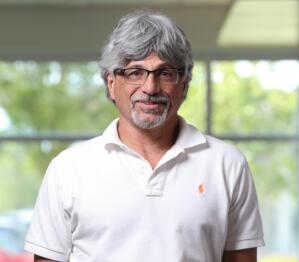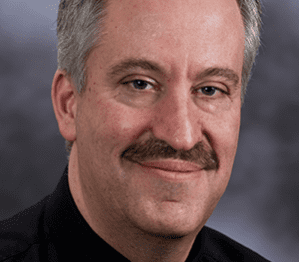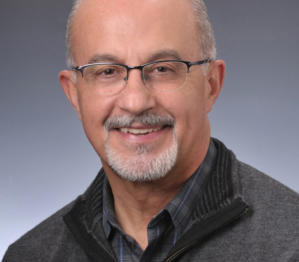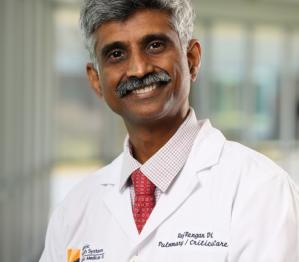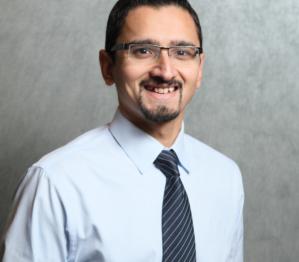If you or a loved one are having trouble sleeping, our experienced and caring team uses advanced technology in a comfortable, private, home-like environment to determine the cause of your symptoms and recommend an appropriate treatment plan. Our technical staff members are certified by the Board of Registered Polysomnographic Technologists. As part of a health care system, we offer immediate access to on-site experts in a wide range of medical specialties.
SLEEP STUDIES
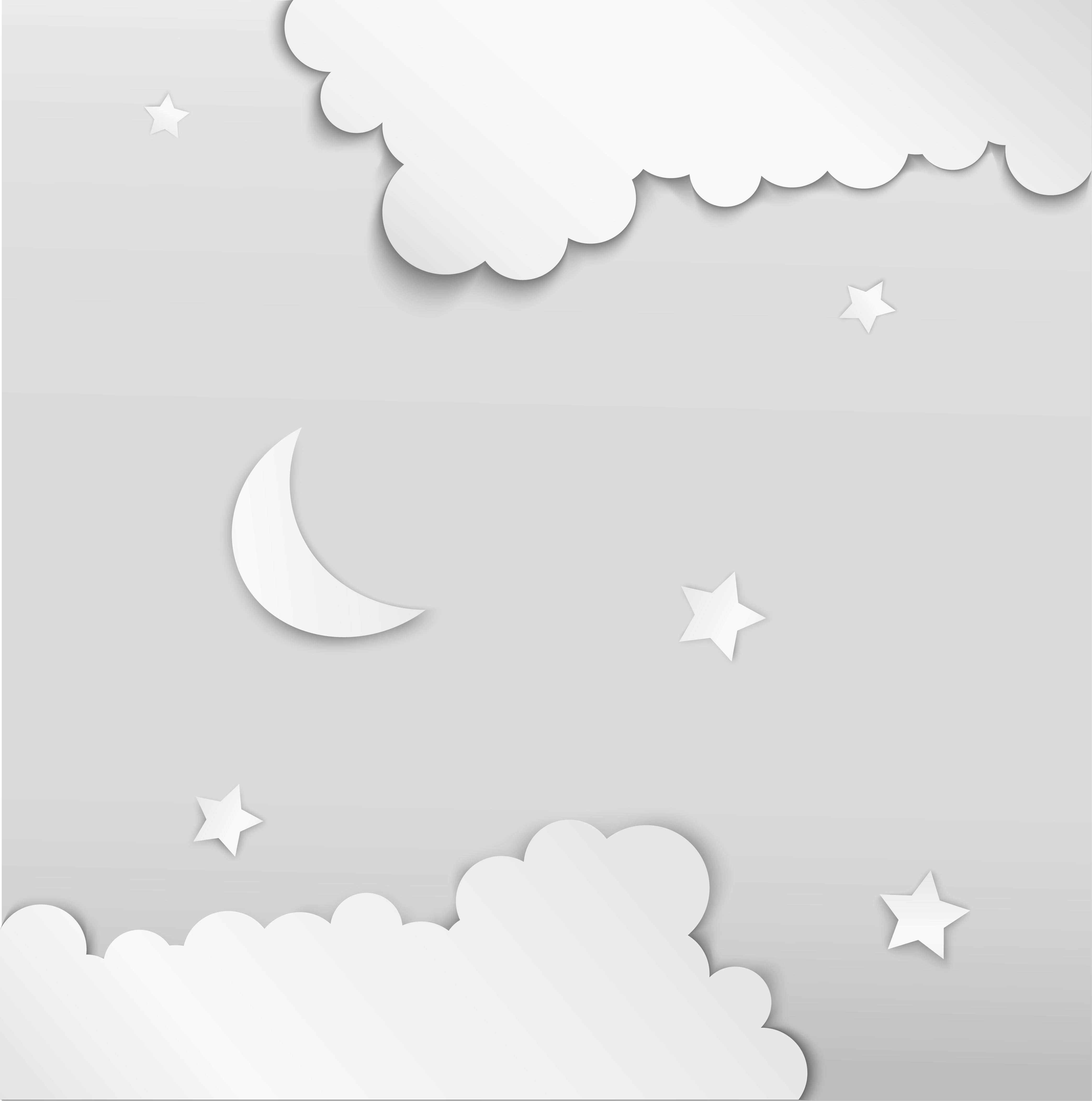
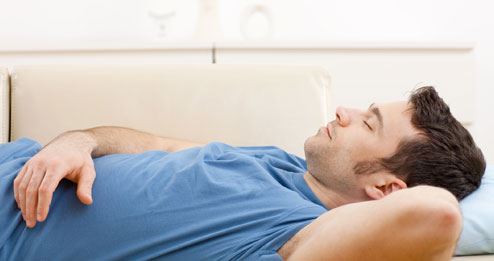
This series of mini nap studies is usually performed during the day after your initial sleep study. It assesses your degree of daytime sleepiness and is useful in diagnosing narcolepsy and other conditions that lead to excessive daytime sleepiness.
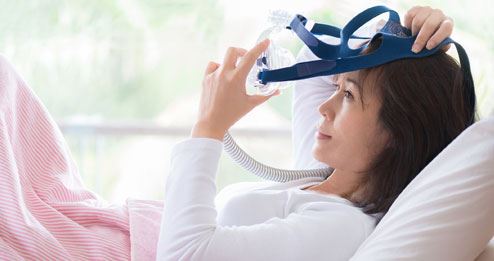
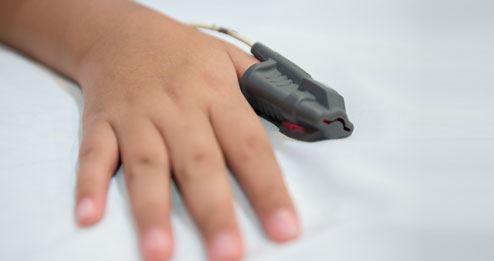
This home sleep study is used to diagnose obstructive sleep apnea (OSA). The HSAT is a small, portable device that monitors air flow, respiratory effort, and pulse oximetry (blood oxygen level). The device is picked up at the Center for Sleep Disorders, and a registered sleep technologist will provide instructions for use. This test may be appropriate for those who have had a sleep evaluation, have a high probability of having OSA, and do not have other significant medical conditions.
We also offer CPAP desensitization services for patients who have difficulty adjusting to the use of a continuous positive airway pressure (CPAP) device— a common therapy used for sleep apnea treatment. The services are covered by most insurance plans and can be performed in just a few hours during the day.
PRIVATE BEDROOM SUITES
At the Center for Sleep Disorders, we want to make your experience as comfortable and convenient as possible. Our four, spacious private bedroom suites for adult and pediatric sleep studies include televisions with DVD players, bedside reading lamps, and private bathrooms with showers. Each suite features a queen-sized, “bed-number” bed with freshly laundered linens. Pillows are provided, although some patients prefer to bring their own.
We also have an assortment of snack foods available—a courtesy of particular importance to patients who must monitor their blood sugar levels. Coffee, tea, and a light snack are available in the morning following an overnight sleep study.
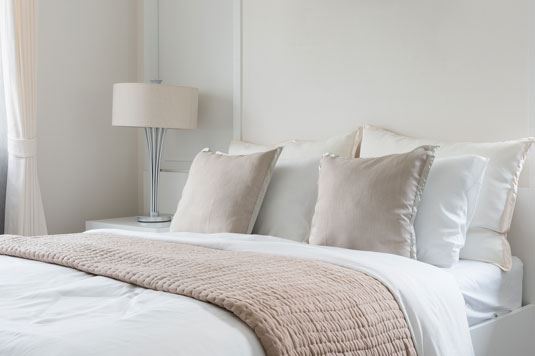
FAQs
Sleep needs vary. In general, most healthy adults require about eight hours of sleep a night. However, some individuals are able to function normally after as little as six hours of sleep. Others aren’t at their peak performance unless they have slept for 10 hours. Contrary to common misconceptions, the need for sleep does not decline with age.
Normal sleepers have a relatively predictable “sleep architecture”—the term used to describe an alternating pattern of REM (rapid eye movement) and non-REM sleep, or active sleep and quiet sleep. In quiet sleep, the body drifts through four stages, from light to very deep sleep. Breathing, heartbeat, and brain waves become slower.
The body then drifts back to stage two before switching to the fifth stage— active, or REM, sleep—when breathing, heartbeat, and brain waves quicken, vivid dreams occur, and rapid eye movements take place behind the eyelids. After the REM stage, the body returns to stage two. The normal sleep cycle lasts about 90 minutes, and is repeated four to six times per night.
An interactive Epworth Sleepiness Scale (ESS) test can help determine if you may be suffering from a sleep disorder. The ESS is a screening tool used by the American Association of Sleep Medicine that will help measure your general level of sleepiness.
Adequate sleep is not just rest for a weary body; it is essential to peak performance, good mental and emotional functioning, and safety. Even occasional sleeping problems can impair the ability to perform tasks involving memory, learning, and logical reasoning—interfering with productivity and raising stress levels. They can also have catastrophic, even deadly, consequences. According to the National Sleep Foundation, fatigue contributes to more than 100,000 police-reported highway crashes, resulting in 71,000 injuries and 1,500 deaths in the U.S. each year.
Poor sleep isn’t simply an inconvenience. Left untreated, a sleep disorder can lead to serious medical conditions, including heart attack, stroke, motor vehicle accidents, problems at home or work, and strains on relationships. If any of the following symptoms affect you, a sleep study may make a difference in your life.
- Loud, habitual snoring
- Choking, gasping, or snorting during sleep
- Pauses in breathing during sleep
- Daytime fatigue
- Frequent napping
- Trouble falling or staying asleep
- Crawling, tingling, or painful sensations in your legs while sitting or lying still in bed
- Leg or arm jerking during sleep
- Morning headaches
- Depression
- Memory and concentration problems
- Irritability/personality changes
- High blood pressure
- Sexual problems
Sleep Apnea
Sleep apnea is when a person stops breathing repeatedly during sleep, sometimes hundreds of times during the night, and often for a minute or longer. It is usually accompanied by snoring.
Obstructive sleep apnea (OSA) is caused by a blockage of the airway, usually when the soft tissue in the rear of the throat collapses and closes during sleep. In central sleep apnea, the airway is not blocked but the brain fails to signal the muscles to breathe. Mixed apnea is a combination of the two.
With each apnea event, the brain briefly alerts the sleeper to resume breathing, resulting in fragmented, poor quality sleep. Usually there is no memory of these brief awakenings. Sleep apnea is as common as adult diabetes and affects more than12 million Americans, according to the National Institutes of Health. Risk factors include being male, overweight, and over the age of 40, but it can strike anyone at any age, even children.
Chronic Insomnia
Chronic insomnia is when a person has trouble falling or staying asleep, or wakes up and remains awake for long periods during the night. Insomnia tends to increase with age. It affects about 40 percent of women and 30 percent of men. Insomnia is defined as chronic when it happens at least three nights a week for a month or longer. Common causes of chronic insomnia are depression, chronic stress, and pain or discomfort at night.
Narcolepsy
Narcolepsy is a chronic neurological disorder caused by the brain’s inability to regulate sleep-wake cycles normally. At various times throughout the day, people with narcolepsy experience fleeting urges to sleep. If the urge becomes overwhelming, individuals will fall asleep for periods lasting from a few seconds to several minutes. In rare cases, some people may remain asleep for an hour or longer.
In addition to excessive daytime sleepiness (EDS), three other symptoms are common with narcolepsy:
- Cataplexy, or the sudden loss of voluntary muscle tone
- Vivid hallucinations during sleep onset or upon awakening
- Brief episodes of total paralysis at the beginning or end of sleep
In many patients, narcolepsy is not definitively diagnosed until 10 to 15 years after the first symptoms appear. The cause of narcolepsy remains unknown.
Restless Legs Syndrome (RLS)
Restless legs syndrome (RLS) is an overwhelming urge to move the legs. It’s usually caused by discomfort in the evening and at night and is relieved by moving the legs. RLS can cause difficulty falling or staying asleep, and may cause involuntary jerking of the legs during sleep and sometimes while awake.
Up to 8 percent of the U.S. population may have this neurologic condition, which has no known cause in many cases. Researchers suspect RLS may be due to an imbalance of the brain chemical dopamine, which sends messages to control muscle movement. It sometimes happens with other conditions, such as peripheral neuropathy (damage to the nerves in the hands and feet from chronic diseases like diabetes and alcoholism) or iron deficiency.
Periodic Limb Movement Disorder (PLMD)
Periodic limb movement disorder (PLMD) affects people only during sleep. It can range from shallow, continuous movement of the ankle or toes to wild and strenuous kicking and flailing of the legs and arms. Abdominal, oral, and nasal movement sometimes happens with PLMD. PLMD and restless legs syndrome (RLS) are separate disorders, but can happen together.
Bruxism
Bruxism (often called “gnashing”) is involuntary teeth grinding, either while awake or asleep (nocturnal bruxism), which results in tooth damage and jaw pain. Nocturnal bruxism happens in about 5 percent to 20 percent of adults and is even more common among children. On average, this grinding can happen 25 times per night, in four- to five-second episodes. The cause of bruxism is unknown, but it may be linked to stress, facial or oral trauma, nervous system problems, poor diet, and allergies.
Circadian Rhythm Disorders
Circadian rhythm disorders are disruptions of the natural biological cycles that control how people are in tune with night and day. Most people function on a circadian rhythm of about 24 hours, controlled by the internal biological clock in the brain. If you have a circadian rhythm disorder, your body can’t maintain its normal rhythm. Your natural sleep schedule changes so that you are out of phase with day and night.
Sleep Terrors
Sleep terrors (also known as Pavor Nocturnus, incubus, severe autonomic discharge, or night terror) are characterized by a sudden awakening from slow-wave sleep with a piercing scream or cry. This is accompanied by displays of intense fear and partial or total amnesia for the events during the episode. Sleep terrors usually happen within the first third of the night. In the most severe cases, episodes occur almost nightly and may cause self-injury or injury to others.
Sleepwalking
Sleepwalking, also called somnambulism, is a behavior disorder that originates during deep sleep and results in walking or performing other complex behaviors while asleep. It is more common in children than adults, and it is more likely to occur if a person is sleep deprived. It’s estimated that between 1 percent and 15 percent of people sleepwalk.
Depending on the nature of your problem, treatment options may include:
- Lifestyle and behavioral modifications, such as weight loss, regular exercise, and avoiding caffeine, nicotine, and alcohol late in the day. Relaxation training, cognitive therapy, stimulus control, sleep restriction therapy, and sleep hygiene can be effective approaches to eliminating or curtailing behaviors that may interfere with normal sleep.
- Medication therapy, such as:
- Anti-Parkinsonian drugs or dopamine agonists, used to treat restless legs syndrome and periodic limb movement disorder
- Benzodiazepines, a type of hypnotic used to treat parasomnias, bruxism, and short-term insomnia
- Non-benzodiazepine hypnotics, used for short-term insomnia; these include Ambien, Sonata, and Lunesta
- Melatonin receptor stimulator, a new class of drug for treating insomnia
- Anticonvulsants, used to treat restless legs syndrome, periodic limb movement disorder, and insomnia
- Antinarcoleptics, used to control excessive daytime sleepiness
- Alternative therapies, such as acupuncture, guided imagery, yoga, hypnosis, biofeedback, aromatherapy, relaxation, herbal remedies, and massage.
- Mechanical therapy. Continuous positive airway pressure (CPAP) is a common treatment for sleep apnea in which a mask is worn over the nose and/or mouth at night. CPAP forces air through the upper airway with just enough pressure to prevent the upper airway tissues from collapsing during sleep. Dental appliances (oral mandibular advancement devices) can also be used for sleep apnea to prevent the tongue from blocking the throat or to advance the lower jaw forward when you are lying down.
- Surgery is sometimes recommended for people with sleep apnea, usually after more conservative methods have failed. It can be effective for patients with upper airway obstruction, such as a deviated nasal septum.
Just about everyone experiences an occasional night of poor sleep. But certain people may be particularly vulnerable. These include students; shift workers; travelers; people suffering from acute stress, depression, or chronic pain; employees who work long hours or multiple jobs; and the elderly.
Common “sleep stealers” include:
- Psychological factors: Stress is generally considered to be the No. 1 cause of short-term sleeping difficulties. If problems aren’t managed properly from the start, they can persist long after the original stress has passed. Depression can trigger both insomnia and sleeplessness.
- Lifestyle stressors: Certain activities and behaviors can interfere with normal sleep, such as drinking alcohol or caffeinated beverages late in the day, exercising close to bedtime, and working or doing other mentally demanding activities right before or after getting into bed.
- Shift work: According to the National Sleep Foundation, research shows that shift workers are two to five times more likely than employees with regular, daytime hours to fall asleep on the job.
- Jet lag: Traveling across several time zones can knock your biological rhythms “out of sync.”
- Physical factors: Arthritis and other conditions that cause pain or discomfort can interfere with sleep. Being overweight increases the risk for sleep apnea. For women, pregnancy and hormonal shifts can adversely affect sleep.
- Medications: Certain medications can interfere with sleep. These include decongestants, steroids, and some medicines for high blood pressure, asthma or depression.
Overnight sleep studies take place in one of our private bedroom suites, where you are fitted with monitoring equipment that transmits data electronically to recording equipment. Surface electrodes on your face and scalp measure electrical activity generated by your brain and muscle movements. Belts placed around your chest and abdomen measure your breathing. An oximeter on your finger measures the amount of oxygen in your blood.
The information is captured on recording equipment that sleep technologists monitor throughout the study. The technology includes:
- An EEG (electroencephalogram) to measure and record brain wave activity
- An EMG (electromyogram) to record muscle activity such as face twitches, teeth grinding, and leg movements and help determine when you are in deep (REM) sleep
- An EOG (electro-oculogram) to record eye movements, which are important in determining what stage of sleep you are in
- An EKG (electrocardiogram) to record heart rate and rhythm
- A nasal airflow sensor to record airflow
- A snore microphone to record snoring activity
- A camera to record body positioning
Your study is then interpreted by one of our board-certified sleep physicians, who meets with you to discuss the findings and recommend appropriate therapy.
Yes, ask your physician for a prescription to visit the Center for Sleep Disorders.
Sleep studies are generally covered by insurance with a prescription, however you must always check with your insurance plan to ensure that your care at the center will be covered.
The Center for Sleep Disorders is located on the 3rd floor (Suite 360) of CentraState’s Star and Barry Tobias Ambulatory Campus, Building B, at 901 W. Main Street in Freehold, adjacent to CentraState Medical Center. Four parking spaces are reserved for overnight patients in the Center for Sleep Disorders parking lot. Get Directions



